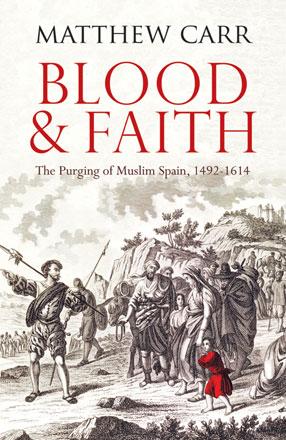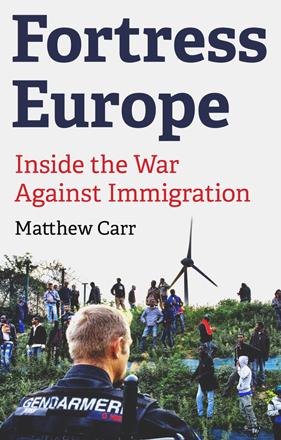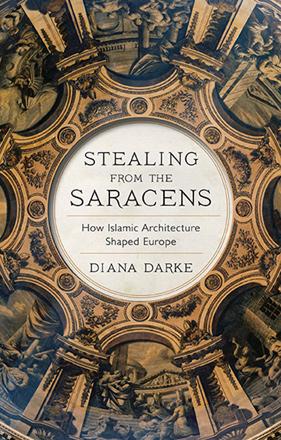You are here
Casting out imaginary devils
By Sally Bland - Mar 04,2018 - Last updated at Mar 05,2018

Blood and Faith: The Purging of Muslim Spain, 1492-1614
Matthew Carr
London: Hurst and Company, 2017
Pp. 427
One tends to associate the end of Muslim Spain with the fall of Granada in 1492, but Matthew Carr focuses on the ensuing century which climaxed in the years, 1609-1614, with the expulsion of more than 350,000 men, women and children known as Moriscos.
These descendants of the Muslims who conquered Spain in 711, had converted to Christianity decades earlier, but still did not conform to the rigid demands of Catholic Spain’s rulers, at a time when the Inquisition was in full force. “Blood and Faith” investigates the causes and consequences of “what was then the largest removal of a civilian population in European history, even larger than Spain’s previous expulsion of the Jews… the tragedy of the Moriscos was part of a recurring dynamic that has been repeated in many other contexts, in which a powerful majority seeks to remake or define its own identity through the physical elimination or removal of supposedly incompatible minorities, whose presence is imagined as potentially defiling or corrupting”. (pp. 1, 3)
Carr compares the Moriscos’ expulsion to modern examples of ethnic cleansing — of Native Americans, Armenians, the Holocaust, the population exchanges when India and Pakistan were created, the Palestinian exodus in 1948, and the Yugoslav civil wars. Most urgently, he finds parallels to today: “At a time when Europe’s Muslim minorities and Islam itself are seen as a threat to Europe’s cultural and political identity and even as the antithesis of a certain notion of European civilization, it seemed to me potentially useful and instructive to examine how and why the rulers of Catholic Spain destroyed the last vestiges of Islam in Iberia.” (p. ix)
Thus, Carr links this book to his other recent one: “Fortress Europe: Inside the War Against Immigration” (Hurst, 2015).
The book chronicles the debates about how to deal with the Moriscos, which raged in Spain’s Catholic and royal circles for over a century. It also elucidates the socioeconomic conditions prevailing at the time, which coincided with Spain’s rise to be the dominant colonial power and its ambition to rule a united, transnational Catholic kingdom. Spurred on by religious and cultural bigotry, Spain’s rulers debated whether it was enough to convert the Moriscos, whether they should be assimilated or separated from Christian society, expelled from the country, or even exterminated.
Repression of a suspect minority went hand-in-hand with colonial conquest: “as Cortes completed his subjugation of Aztec Mexico in the name of the faith, bands of militiamen conducted their class war cum religious crusade in the Valencian countryside, killing, robbing, and converting Muslims and consecrating their mosques as churches”. (p. 106)
Spain’s concurrent wars with Protestant Europe and the Ottoman Empire made the Moriscos’ status even more perilous, for they were suspected of collaborating with external enemies, and their loyalty questioned.
Along with Islam and learning, the Moors had brought new crops to Spain — sugar, rice, oranges, lemons, silk and coffee. The invigorated agricultural sector, plus expanded trade, laid the foundation for a prosperous, relatively stable and tolerant, multicultural society. “At a time when the largest library in Christian Europe was no more than six hundred volumes, a cottage industry of Arabic calligraphers in Cordoba was churning out some 60,000 handwritten books every year.” (p. 10)
Though Spain’s rulers had little regard for the Arabic language or the rich hybrid culture created in Andalusia, they were concerned about prosperity. The predominance of Moriscos in the agricultural labour force figured heavily into the debates, repeatedly delaying the expulsion decision, as Spanish landowners were opposed. Indeed, after the expulsion, fields and orchards lay fallow in many places — one of several examples cited in the book that the expulsion did not actually benefit Spain.
Besides the sweeping panorama of a critical historical period that Carr provides, his approach reminds that the course of history is not black-and-white; there are always exceptions. Not all Christians had a negative view of Muslims, or vice versa; in times of danger, some Christians protected Muslims, and vice versa. Perhaps the hardest phenomenon to make generalisations about is the attitude of the Moriscos who were coerced into being Christians and hounded into adopting European dress and customs and “forgetting” Arabic. While some became sincere Christians, it is doubtful that the majority did. “Long after their initial conversions, many Moriscos continued to inhabit a parallel Islamic world beneath a façade of Christianity.” (p. 133)
Per definition, it is not possible to know how many continued to practice their Muslim faith in secret, for if discovered, they were brought before the Inquisition courts and subject to severe punishments, including being burned at the stake. And that is beside the point; Spain is the only home they had known, and they had been productive members of society.
Carr’s account is a powerful warning of the perils of intolerance of difference and of policies of forced conversion and assimilation. Besides destroying the truth, such policies destroyed many lives and communities, while the subsequent expulsions caused untold death, sickness, impoverishment and separation of families. As the author concludes: “Four hundred years later, the destruction of the Moriscos is an example of what can happen when a society succumbs to its worst instincts and its worst fears in an attempt to cast out its imaginary devils.” (p. 375)
Related Articles
Fortress Europe: Inside the War against ImmigrationMatthew CarrLondon: Hurst & Company, 2015Pp.
Stealing from the Saracens: How Islamic Architecture Shaped EuropeDiana DarkeLondon: Hurst and Co., 2020Pp.
BERLIN/MADRID — Models testing fashion brands like Adidas, Benetton and Gap are finding that almost a third of the shoes and clothes they tr


















